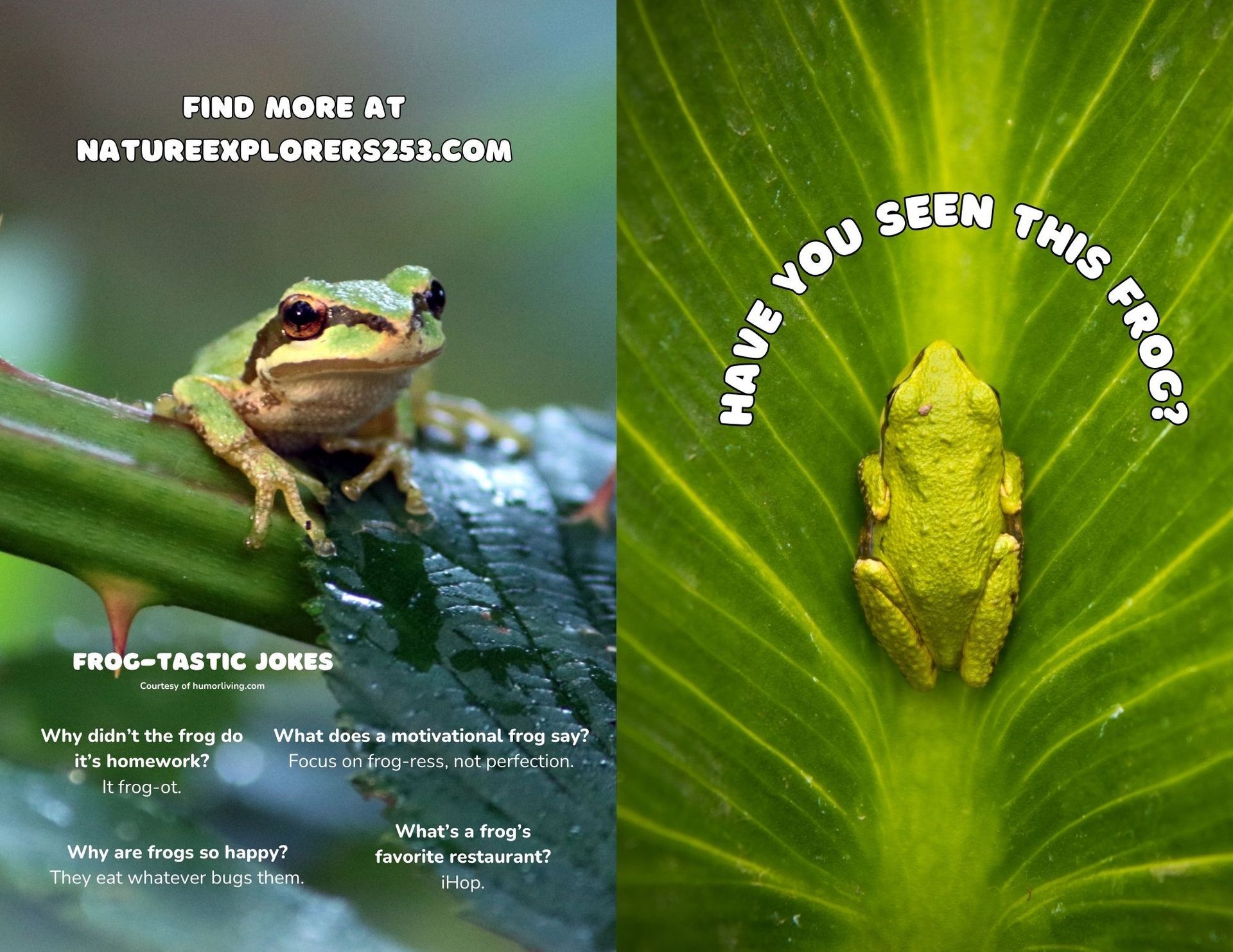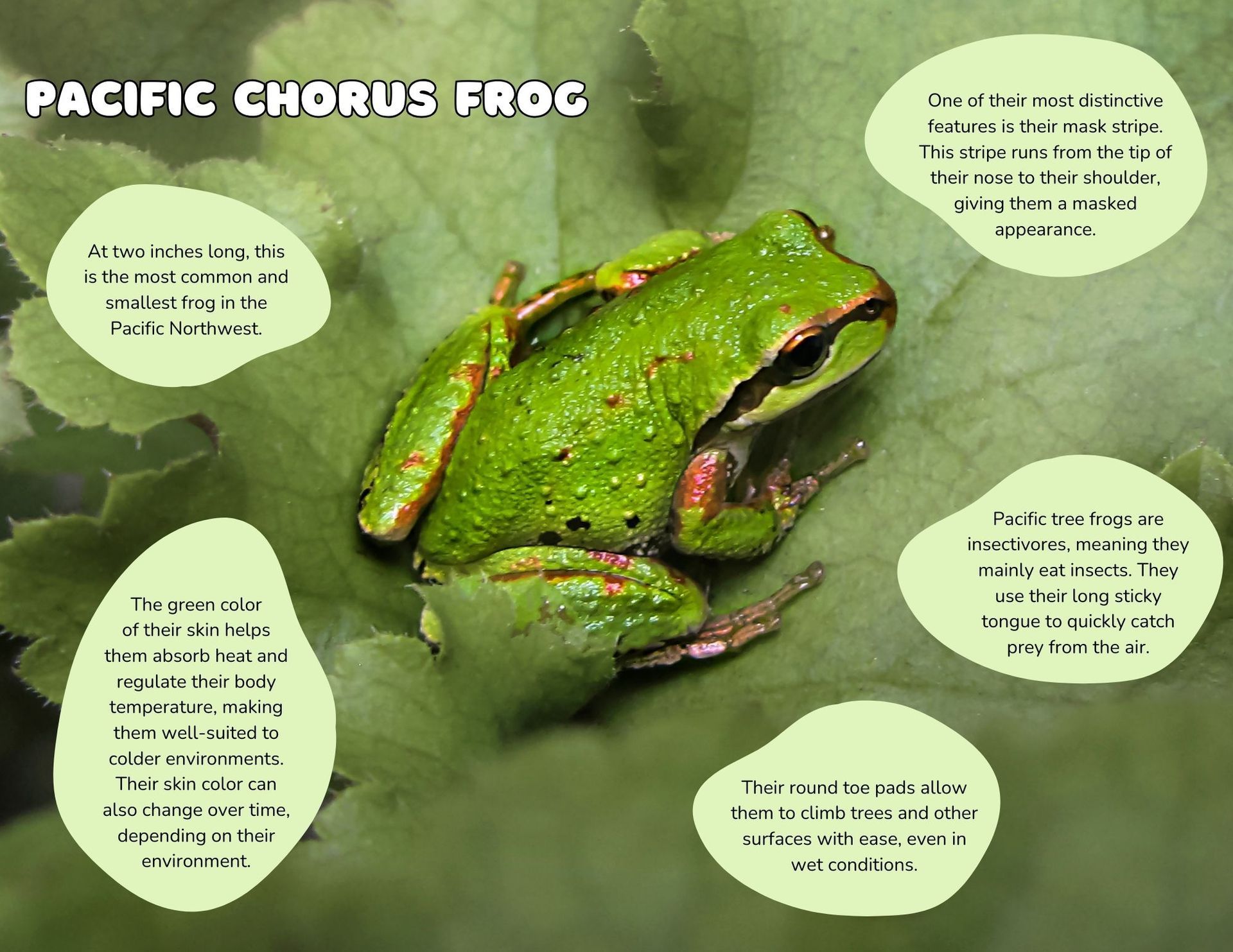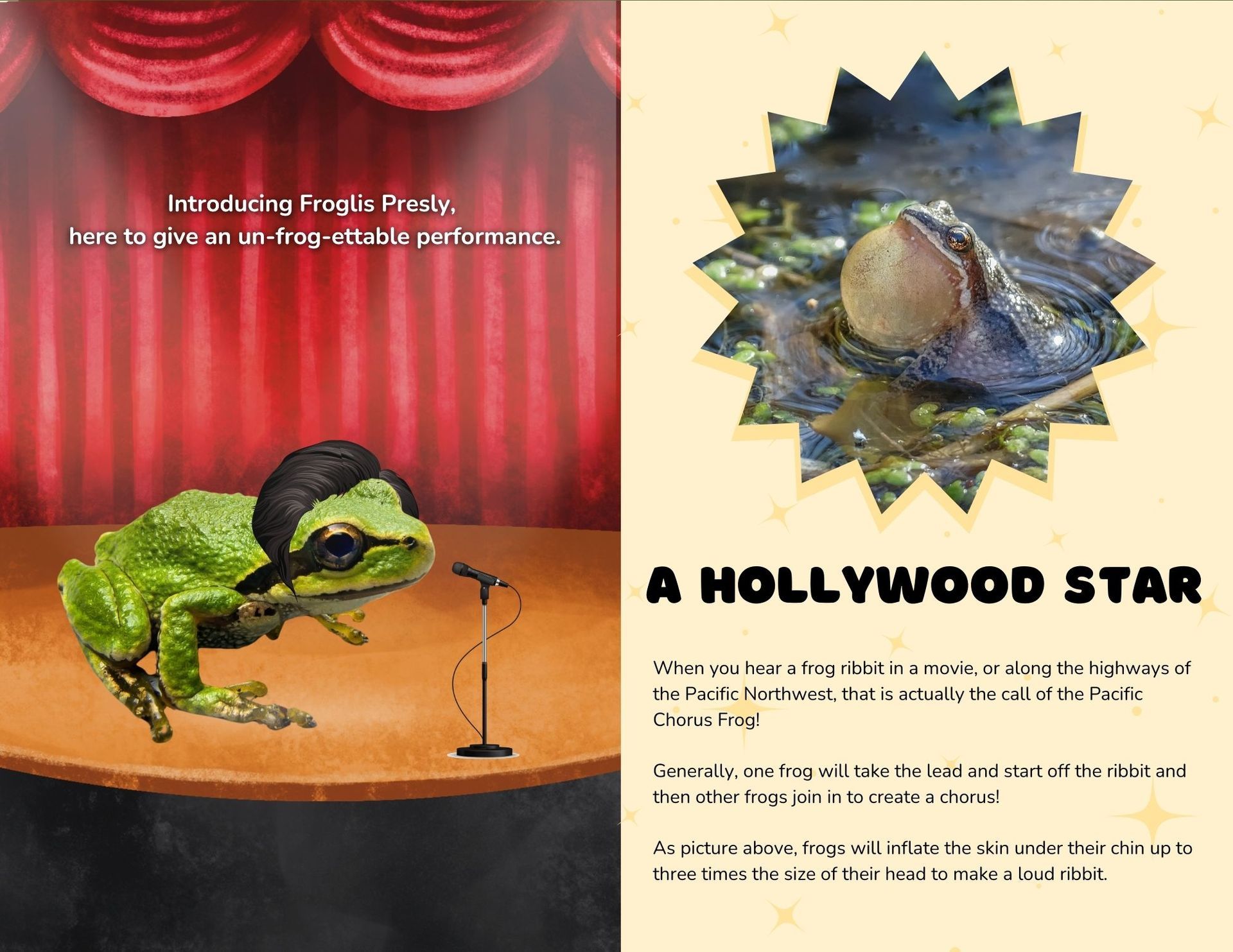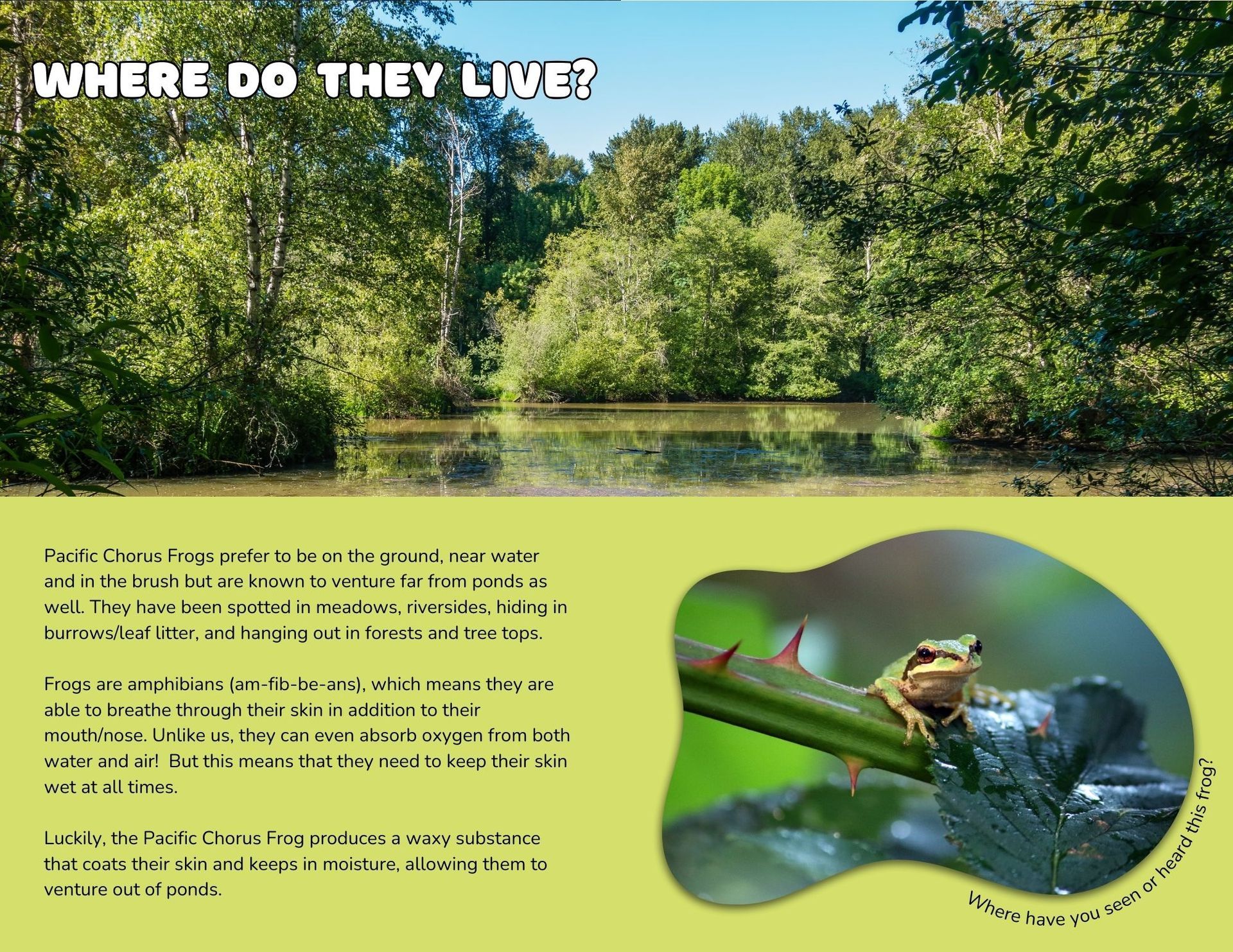Pacific Chorus Frogs
Who is this tiny frog?
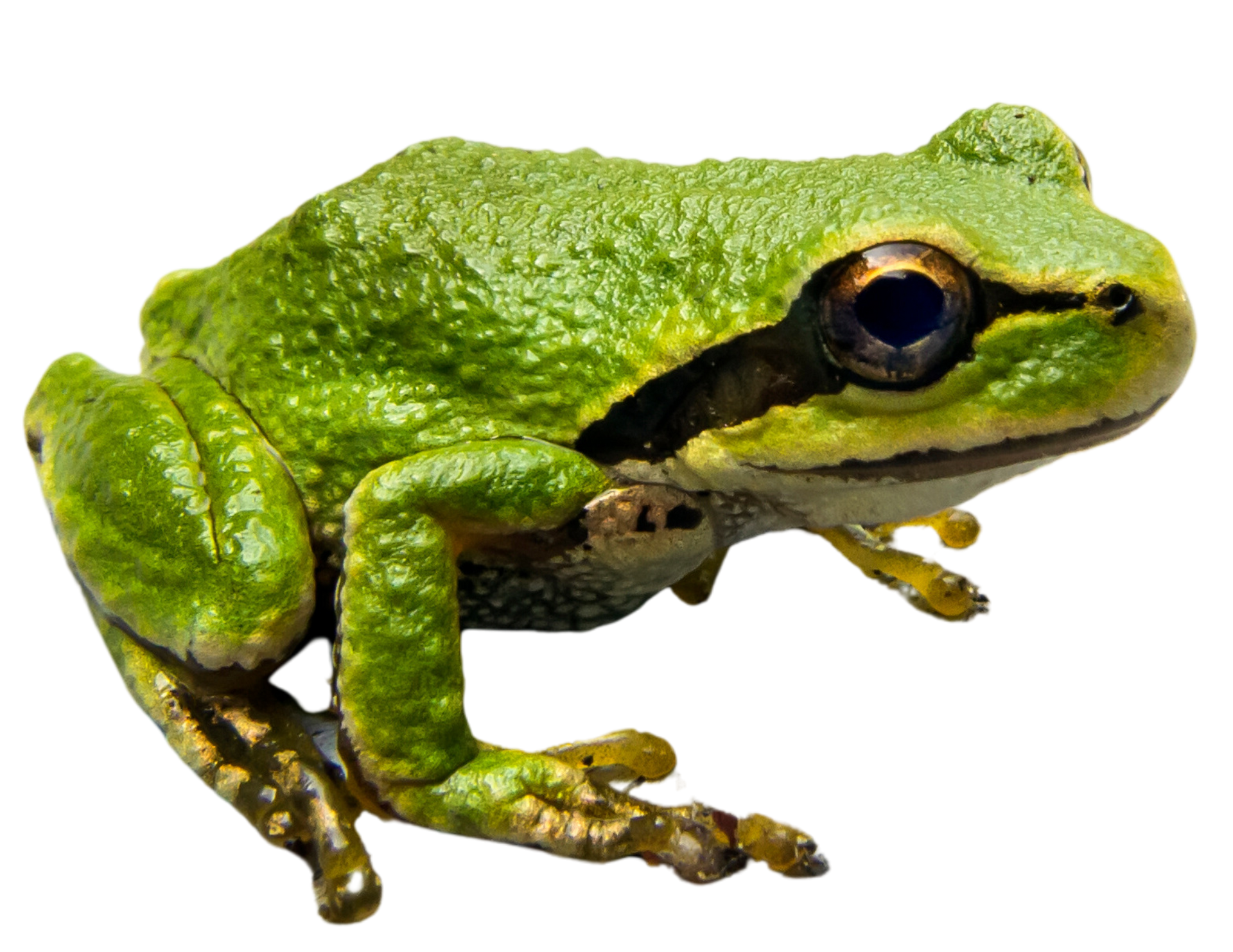
At two inches long, this is the Pacific Chorus Frog, the most common and smallest frog in the Pacific Northwest. This green bodied, brown masked frog is also officially Washington's State Amphibian.
Fun fact: These frogs will sometimes hide themselves underneath leaves, soil, and in empty burrows. When Mt Saint Helen's erupted, many of frogs were protected from the eruption and able to survive because they were buried.
Have you heard this frog before?
Chances are, you have! The ribbit of the Pacific Chorus Frog is often used in Hollywood movies and along the roads and ponds of the Pacific Northwest.
Generally, one frog will take the lead and start off the ribbit and then other frogs join in to create a chorus!
Why do frogs make noises?
Where do Pacific Chorus Frogs live?
These frogs are able to live in a range of different places in the Pacific Northwest, do you recognize any of them?
They prefer to be on the ground, near water but thanks to a waxy coating on their skin that helps keep them moist, they can venture far from ponds and visit a variety of places.
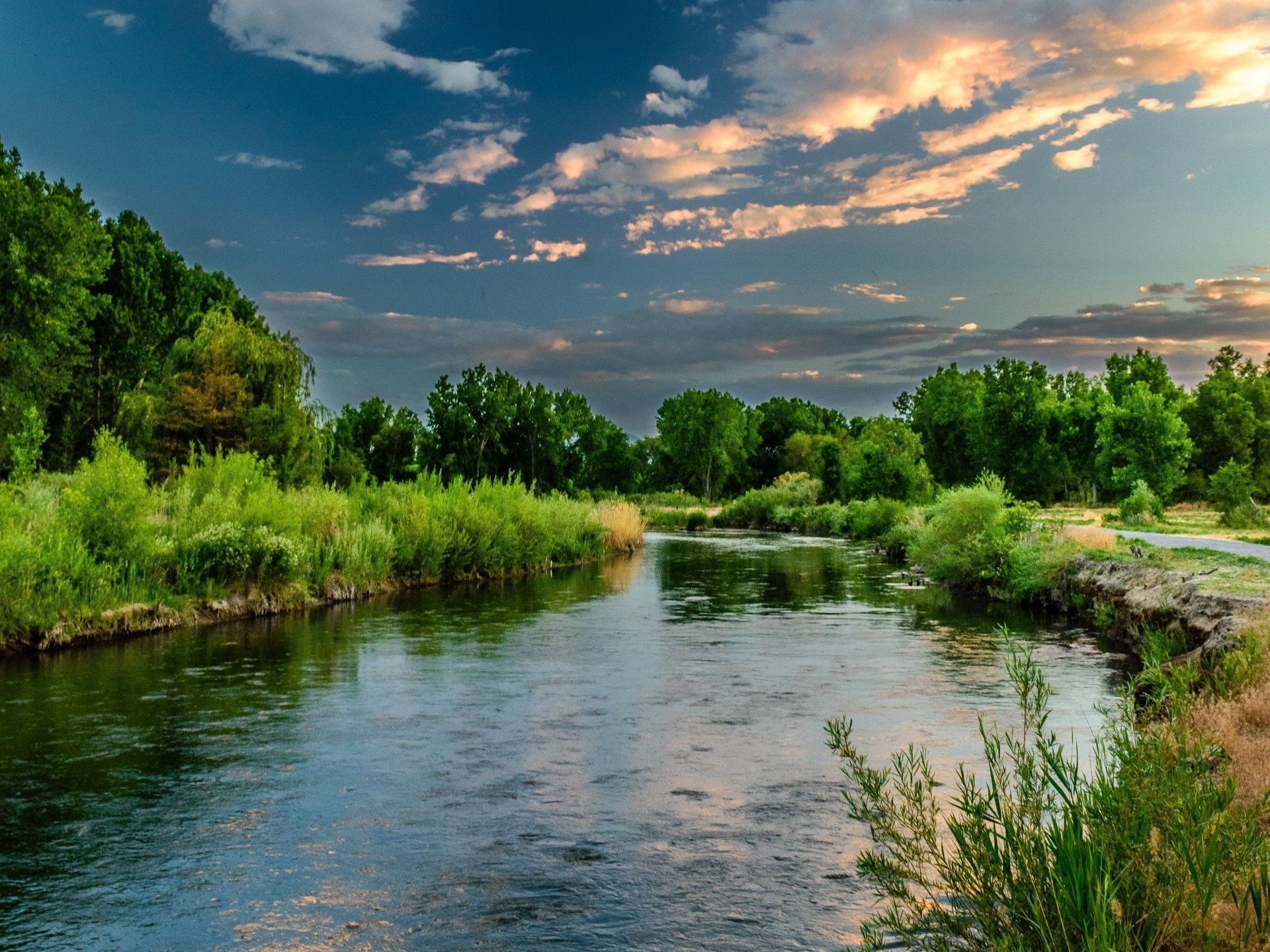


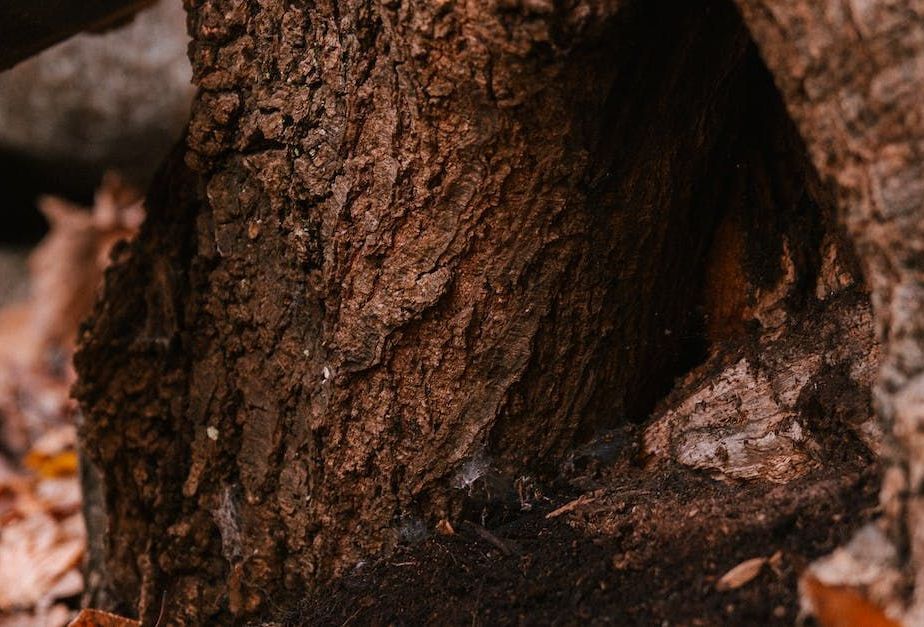
Now we know that blending in and making music are important aspects of frog's lives, see if you can test out your frog skills in these short video games and activities!
Color changing frogs
Depending on the habitat, frogs can change their color depending on temperature and humidity in a matter of hours to months.

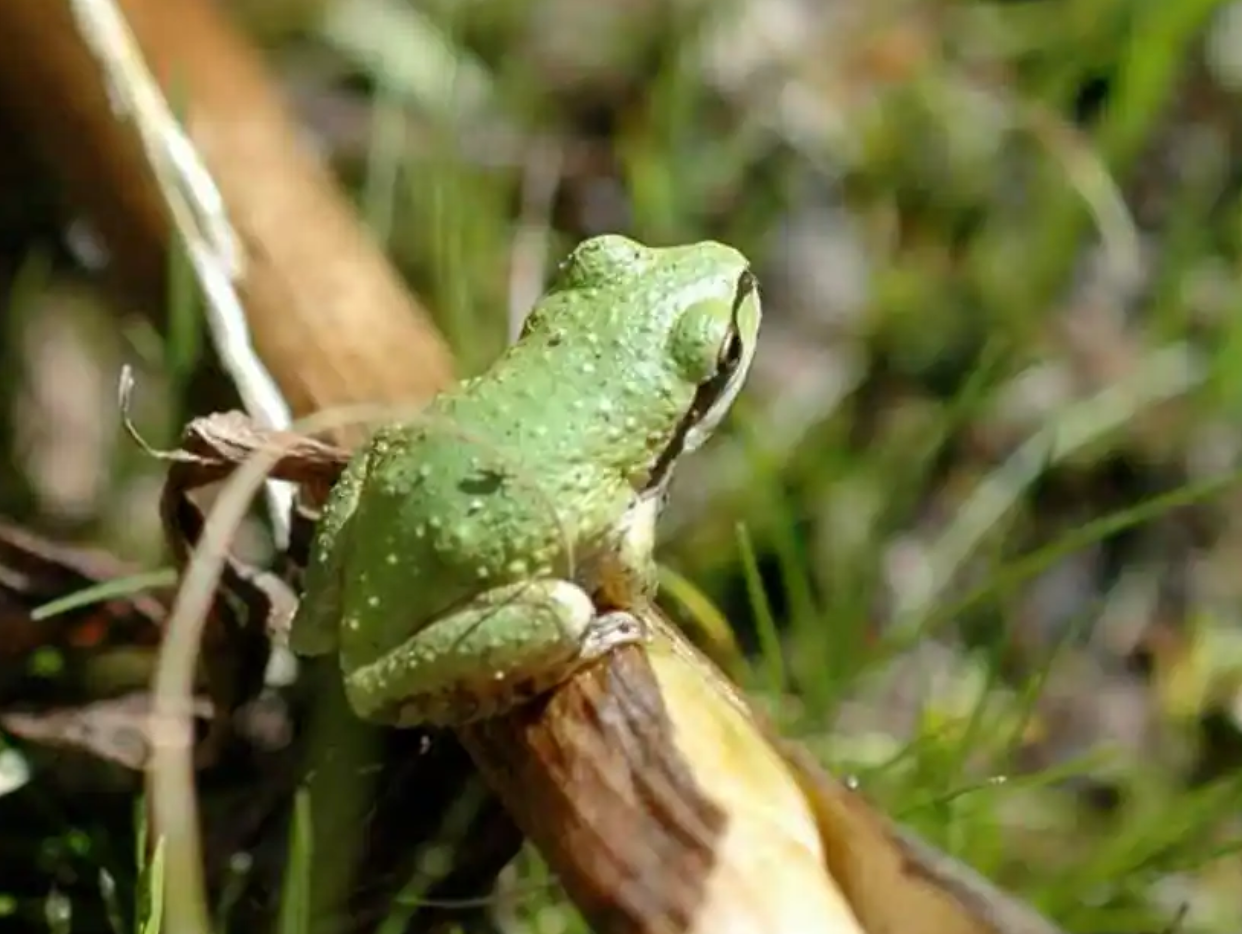
Let's learn a bit more about Pacific Chorus Frogs!
Click the arrows to read the zine or click here to download it for later.
Living with frogs
Tips for finding frogs with your adult! Courtesy of the
Washington Department of Fish and Wildlife.
Viewing frogs:
- Listen for ribbits
- Slowly and quietly approach the edge of ponds, swamps, marshes, and other bodies of fresh water
- Do not enter the water as that will scare away the frogs
- February through August is best for viewing adults, eggs, tadpoles, or juveniles
- Do not touch the frogs as it could harm them
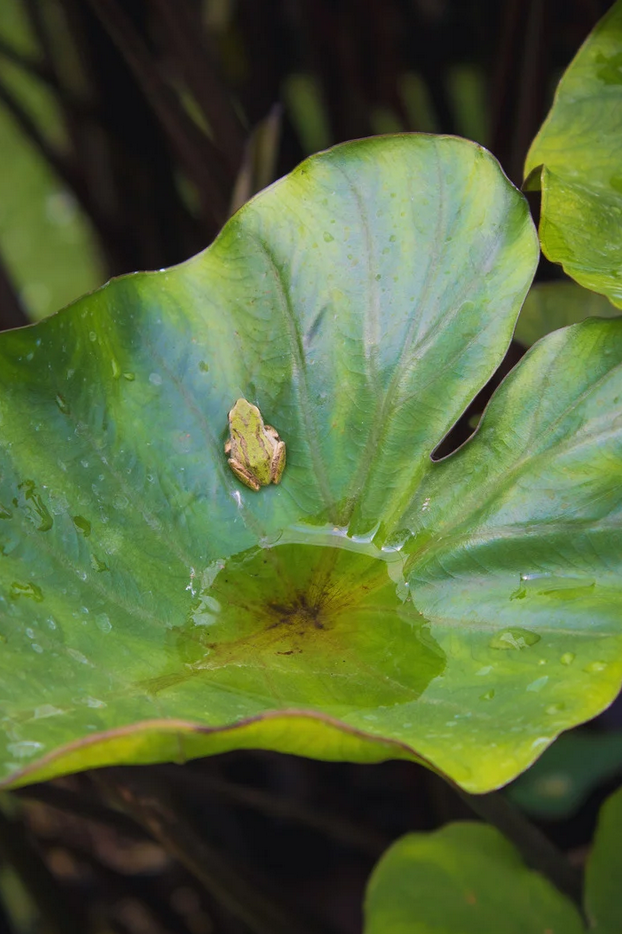
Making your backyard more welcoming to frogs:
- Protect existing natural areas in your community
- Leave the leaves! When leaves fall from your tree, consider letting it be. Such material provides cover and moisture; it also attracts organisms that amphibians eat.
- Retain stumps, logs, rootwads, rock piles, and other debris that provides a cool, moist habitat for amphibians.
- Consider planting native plants (like clover) instead of grass. Let the clover grow without mowing it.
- Consider building a pond. Treefrogs will breed in almost any type or size of pond. If your pond is aimed at amphibians in general, however, it is critical not to stock fish, given the problems with predation and the increased nutrient load that may result. For fish lovers, one option is to build a separate pond specifically for fish.
- Avoid using pesticides and herbicides. Amphibians have can easily absorb toxic chemicals and get sick.

